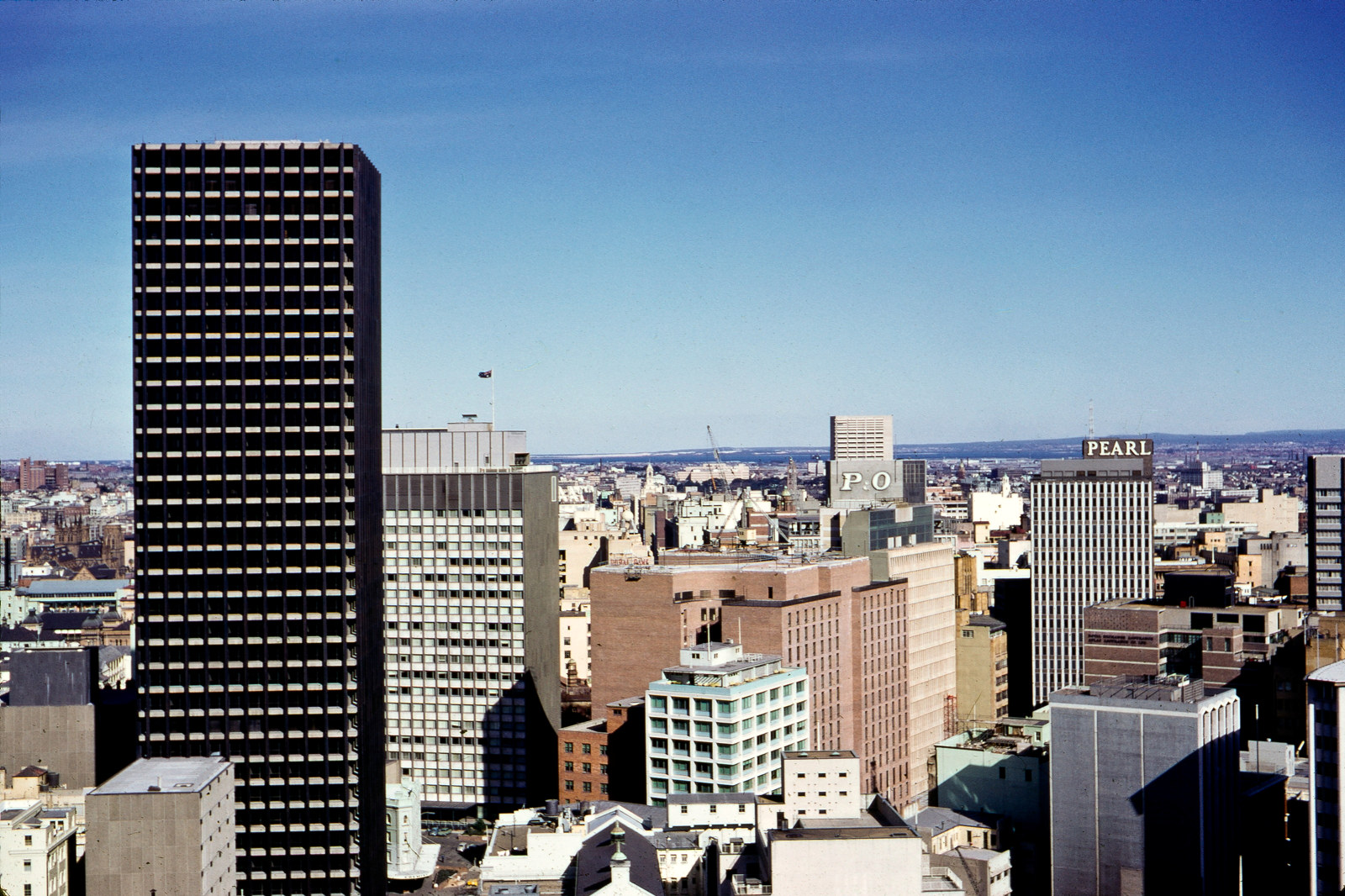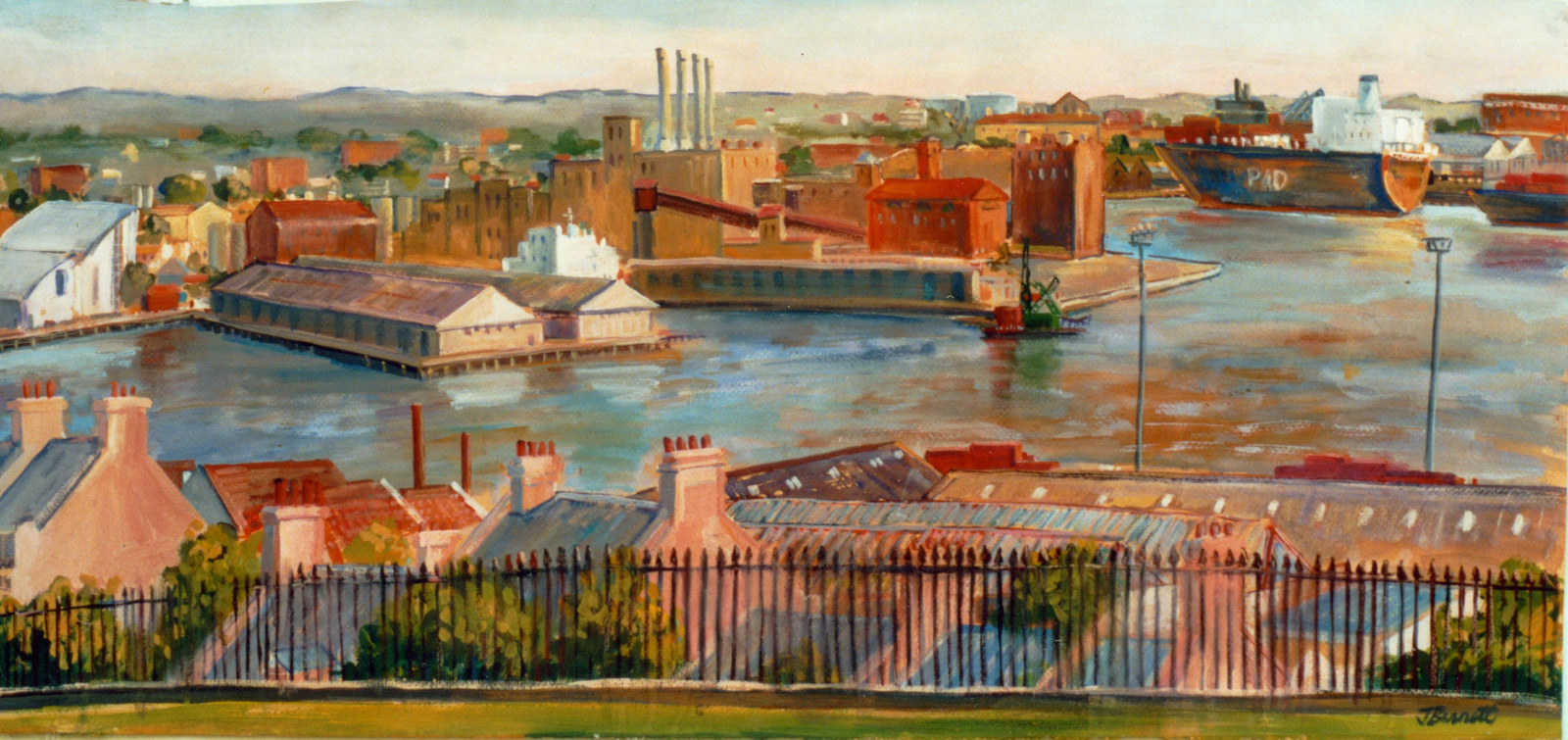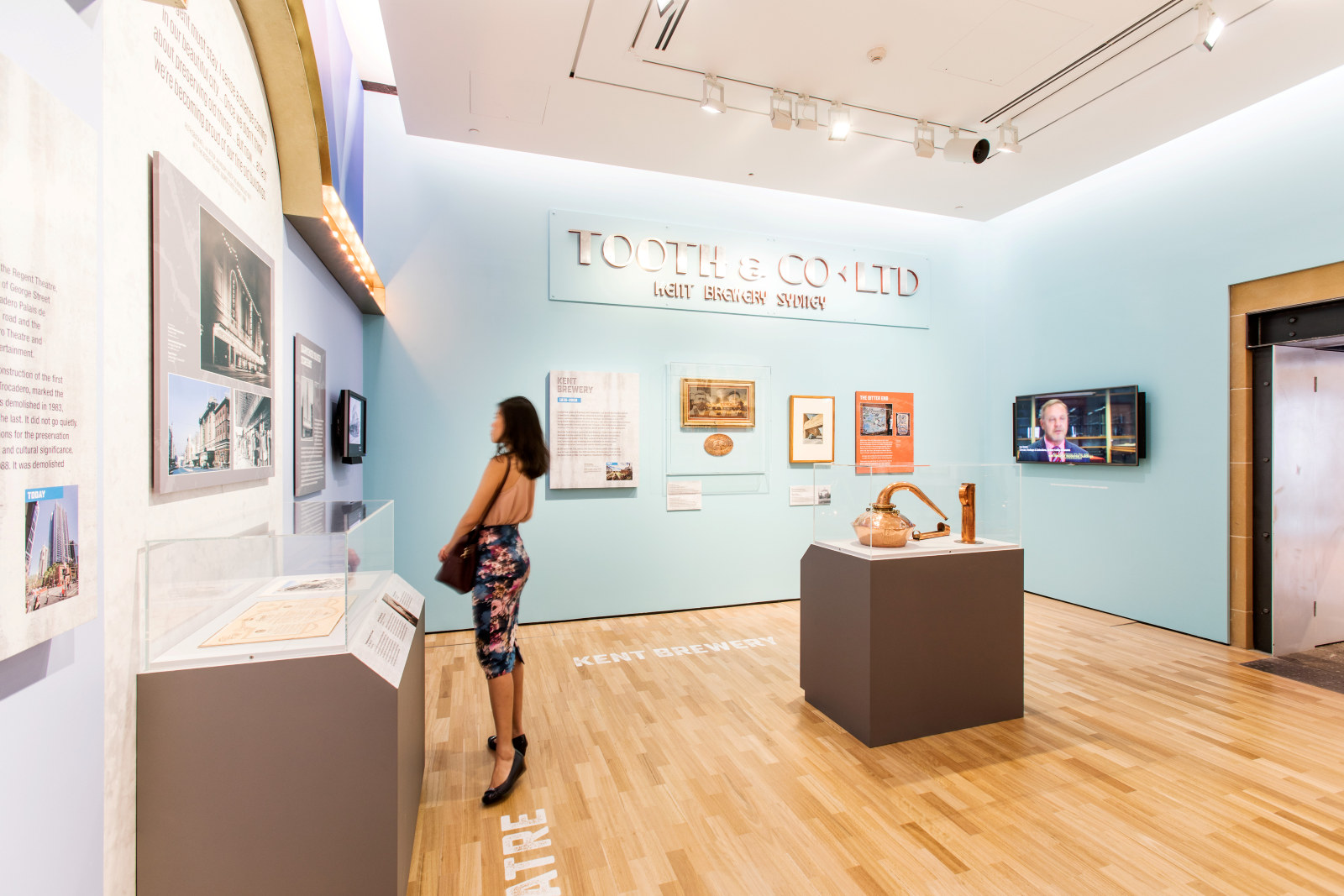Unlocked: Demolished Sydney
Like cities across the world, Sydney has been in a constant state of building development and urban change. Our exhibition, Demolished Sydney, looks at how demolitions have shaped our dynamic city landscape.
Making way for the new
In 1923, when construction of Sydney’s City Circle subway was tearing up Hyde Park, and department stores and offices were replacing brick shops and sandstone banks, demolitions were heartening evidence of ‘a future city that will be immeasurably greater even than the Sydney of today ... A new city is springing Phoenix-like out of the ashes of the past’.1 Today that 90-year-old train line running through the urban centre struggles to cope with a population that has swelled to nearly 5 million. In 2018 a number of central Sydney buildings will be demolished to build the Sydney Metro, which, along with light rail and freeway construction, is part of an infrastructure boom comparable in scale to the construction of the Sydney Harbour Bridge. Once more, as it did in the office-block boom of the 1960s and the Bicentennial and Olympic projects of the 1980s and 90s, the city will demolish and shapeshift to accommodate the changing needs of its population.
Lost buildings
The Museum of Sydney’s exhibition Demolished Sydney surveys a history of the city’s lost buildings, from the Garden Palace in 1882 to Tooth’s Kent Brewery in 2008. It remembers a variety of buildings – a church, a tram shed, an incinerator, a theatre, a hotel, a bank – and considers the forces and factors that triggered their demolition, shaping the city’s changing skyline and character.
As technologies have changed, and populations have moved and industries diversified, Sydney’s buildings have risen and fallen. Some, like tram sheds and cinemas, were made obsolete by cars and television; others were felled for city improvements or in response to changing height restrictions, increasing land values, environmental legislation or the demand for housing and office space. In some cases the demolition of particular buildings, such as the Commissariat buildings at Circular Quay and the Rural Bank in Martin Place, sharpened an appreciation of Sydney’s heritage that led to the preservation of similar buildings. These losses and demolitions trace not only Sydney’s evolution but also our changing understanding of the city’s mix of Georgian, Victorian, Art Deco, industrial and modernist architecture.
The Hotel Australia wrapped around the Commercial Travellers Association Club building. This photograph shows two of the facades of the hotel: at left the original 1891 Castlereagh Street facade and at right the 1936 Martin Place extension.
The march of progress
Like cities across the world, Sydney has been in a constant state of building and rebuilding since its first flaky mortar was mixed from burnt oyster shells scavenged from the Aboriginal middens that dotted the harbour foreshores. Demolition has been a constant part of our city’s history – sometimes welcomed as an encouraging sign of prosperity and progress, and sometimes reviled as a shortsighted obliteration of character. Some city improvements have come at the cost of familiar landmarks, such as the Hotel Australia and Rowe Street, the loss of which fundamentally changed the character and identity of their precinct. Others have erased structures for the creation of places that are now intrinsic parts of the city, like Martin Place and the Sydney Opera House.
Such transitions have not been without conflict. But until the 1970s, city demolitions were generally considered an inevitable side effect of progress. A modern city was one that swept aside the anachronistic buildings of its past, as journalist Gavin Souter observed in 1965:
It is too early for a final verdict on the new city, but already I prefer it to the old. I like the altitude of its buildings ... I much prefer the light and efficiency of the glass boxes to the sombre fussiness of the Edwardian and Victorian ages.2
In the 1970s this sense of the inexorable march of progress bringing down the familiar landmarks of the city was being robustly questioned by Sydneysiders. In 1972, shortly after the destruction of the Hotel Australia and after years of city demolitions, Mrs Margaret McCammon of Mosman wrote to the editor of the Sydney Morning Herald. Her letter expressed a growing concern, shared by many, about the consequences of development in the city. ‘It is not’, she wrote, ‘a case of whether past or present is better. We need both … Let us hope that we will not constantly be pointing our noses in the direction of the future, then in the name of progress, excising everything which stands a few years behind our heels as irrelevant to current ways of life. Our children’s lives will be the poorer if we do’.3
The Garden Palace was built for the 1879 Sydney International Exhibition. A southern rival to London’s Crystal Palace (built for the Great Exhibition of 1851) and a testament to the industry and resources of the colony, it was framed in timber and clad in bricks and glass. At dawn on 22 September 1882, the Garden Palace was consumed by fire. Its lightweight timber framework burned fast and furiously, and in a few hours the entire building was destroyed.
Preserving our heritage
Mrs McCammon’s sense that the city needed both past and present to retain its vitality was shared by those who protested for the preservation of The Rocks, Hyde Park Barracks and the Mint. The green bans and resident action groups of the 1970s led to the 1977 Heritage Act, which was enacted to promote the understanding and conservation of the state’s heritage. Heritage, however, is redefined with the passage of time. The legislation did not prevent the demolition of the Art Deco Rural Bank building in 1982. News of its planned removal triggered protests by the National Trust and the Royal Australian Institute of Architects, who took to the streets and to newsprint, calling for the building’s preservation. This was a battle between public space and corporate interests for an architectural heritage that was, at the time, little understood and appreciated. The fight to preserve it led to the formation of the Art Deco Society, which has since raised awareness and appreciation of Sydney’s Art Deco heritage.
The refined Scandinavian modernism of the 1964 State Office Block was equally unappreciated when it was demolished for the Aurora Place development in 1996. Architects decried its removal, but for the majority, the building was outdated and unloved. In a statement somewhat indicative of attitudes at the time, Premier Barrie Unsworth said, ‘We will always retain our heritage buildings but there is no real reason why we should retain the State Office Block’.4 Subsequent generations may disagree.
We want our cities to be dynamic environments that respond to our shifting needs in technology, usage and infrastructure. But a dynamic environment isone of constant change, as we see today in a city transforming again through the redevelopment of Darling Harbour and Barangaroo, and new transport construction. The history of our demolished buildings shows us that just as our city is evolving, so too are our ideas of heritage and the importance of place.
As the highly successful Central Park development on the site of the demolished Kent Brewery shows, the selective retention and adaptive re-use of heritage buildings like the 1911 Irving Street Brewery and the Kensington Lane terraces can add incalculable value in forming the character of a new precinct. These heritage landmarks anchor the memory of the city’s last major industry in the new development, lodging the history of the site – and of the Sydneysiders who worked and lived there – within its rejuvenated form and uses. This interwoven fabric of past and present enriches the experience of its users as they enjoy the surprising, and often delightful, contrasts of old and new. As our urban environment changes, so too will our idea of heritage and our understanding of what should be preserved for future generations. The ways in which we navigate the tension between the dynamism of urban change and the need to preserve heritage and character will continue to evolve as the city journeys into its future.
Notes
- Sydney Morning Herald, 8 December 1923, p18.
- Gary Souter, Sydney observed, Angus & Robertson, Sydney, 1968.
- Sydney Morning Herald, 8 May 1972, p6.
- Daily Telegraph, 27 April 1987.
Demolished Sydney is on at the Museum of Sydney from 19 November 2016 to 17 April 2017.
Exhibition supporting partner: PORTER’S ORIGINAL PAINTS
Exhibition media partner: SYDNEY MORNING HERALD
Published on
Related

Demolished: State Office Block
Constructed as part of the 1960s renewal and modernisation of Sydney, the State Office Block was an innovative and eye-catching addition to the city’s skyline

Demolished: first Government House
Built on a prominent rise overlooking Sydney Cove, first Government House served as the official residence and administrative office for the first nine governors of New South Wales

Painting Pyrmont
When artist Jane Bennett began capturing Pyrmont’s steel and concrete structures during the late 1980s, many considered them industrial eyesores rather than part of Sydney’s heritage landscape

Watch: Demolished Sydney
The skyline of Sydney has undergone constant change as buildings rise and fall